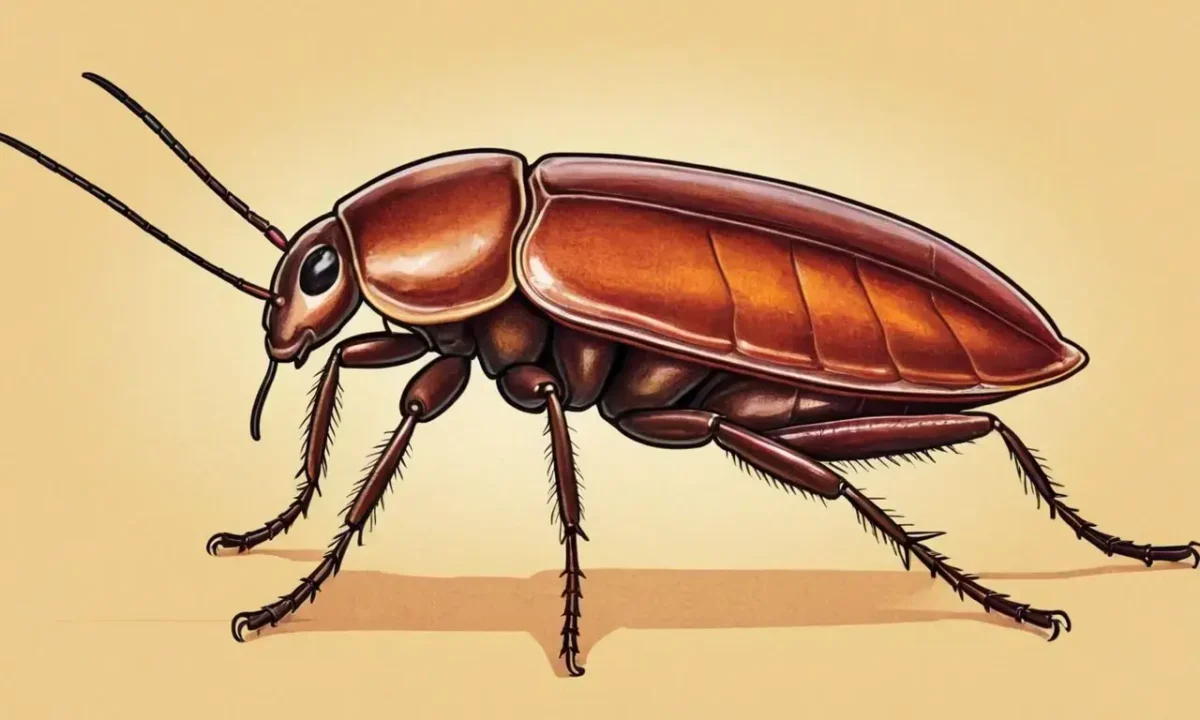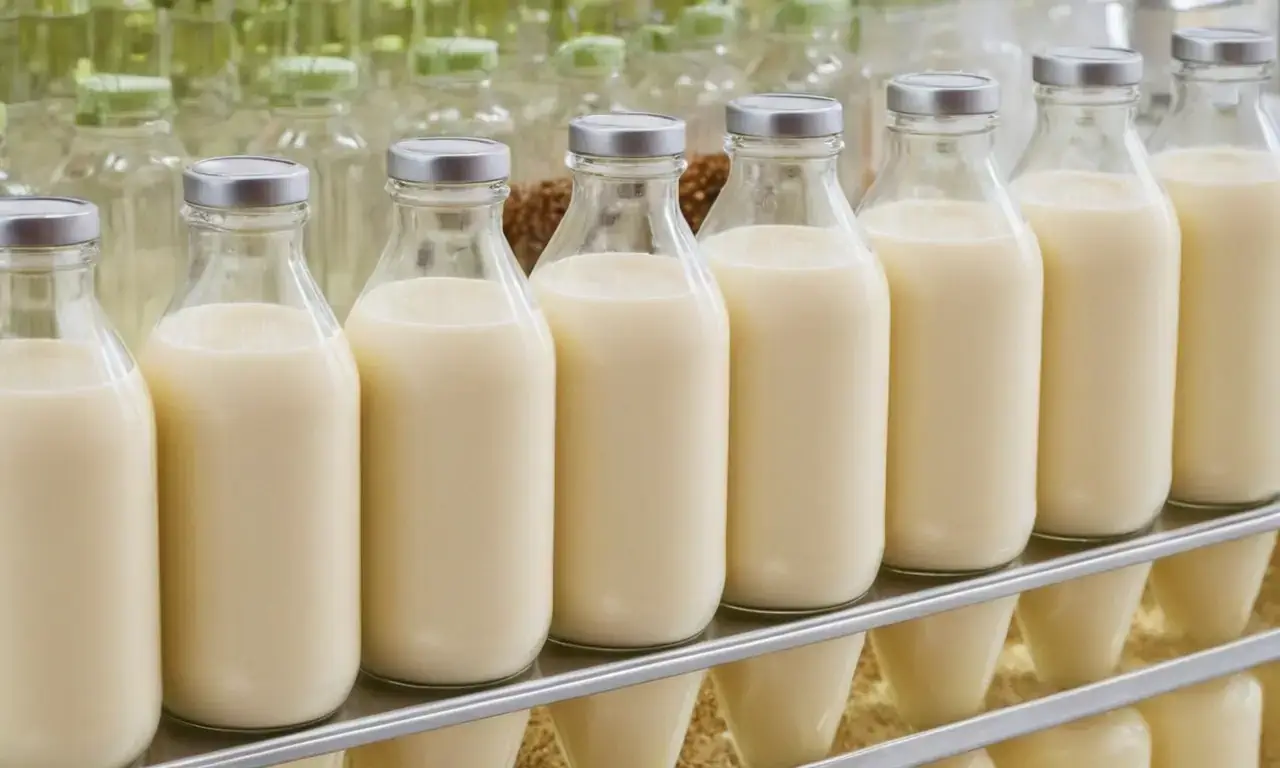
Cockroach Milk: The Unlikely Contender in Plant-Based Market

The world of plant-based milk is rapidly evolving, driven by growing consumer demand for sustainable and healthier alternatives to traditional dairy products. A new market research report predicts that global plant-based milk sales will exceed $34 billion by 2024, with soy, almond, and coconut being the current top choices. However, an unusual contender has emerged: cockroach milk. Scientists have discovered that the Pacific beetle cockroach produces a nutritious substance in its midgut, containing proteins, fats, and sugars, which is more calorie-dense than buffalo milk.
This development has sparked significant interest among researchers and entrepreneurs who see potential in harnessing this unique resource to alleviate food insecurity worldwide. While some may be hesitant about consuming bug-based milk, the prospect of a sustainable and nutritious alternative cannot be ignored. As we delve into the world of cockroach milk for sale, it becomes clear that this unlikely contender has the potential to disrupt the plant-based market in profound ways.
Market Trends
The rise of plant-based milk is not just a passing trend; it's a reflection of changing consumer preferences and values. Many individuals are opting for dairy-free alternatives due to concerns about animal welfare, environmental sustainability, and health benefits. The global market has responded by offering an array of options, from soy milk to oat milk, each with its unique nutritional profile and taste.
However, the current top contenders in the plant-based milk market have their limitations. Soy milk, for instance, is often criticized for its high phytate content, which can inhibit nutrient absorption. Almond milk, while popular, has faced criticism over water usage and environmental impact. Coconut milk, though nutritious, can be expensive and may not appeal to those with dietary restrictions. This gap in the market presents an opportunity for innovative products like cockroach milk bottle to capture a significant share.
The Rise of Plant-Based Milk
The growth of plant-based milk is attributed to several factors, including increased awareness about health benefits, environmental concerns, and the rise of veganism. Consumers are becoming more informed about the nutritional content of their food choices, leading them to opt for products that align with these values. Moreover, the growing demand for sustainable living has led many companies to develop plant-based milk alternatives that not only cater to dietary needs but also reduce carbon footprints.
The market is witnessing a proliferation of new brands and products, each trying to differentiate itself through unique flavors, textures, and nutritional profiles. This competition has driven innovation in production methods, packaging, and marketing strategies. As consumers become more discerning about their choices, the demand for high-quality plant-based milk continues to rise, creating an environment where cockroach milk can potentially thrive.
Cockroach Milk: A Nutritious Substance
The discovery of cockroach milk has been hailed as a breakthrough in nutritional science. The Pacific beetle cockroach produces a substance that is rich in proteins, fats, and sugars, making it a highly nutritious alternative to traditional dairy products. This unique composition offers several advantages over other plant-based milks. For instance, the protein content of cockroach milk is higher than buffalo milk, which could make it an attractive option for those seeking high-protein diets.
Moreover, the production process of cockroach milk involves fewer resources and less environmental impact compared to traditional dairy farming or large-scale agricultural practices required for other plant-based milks. This aspect aligns with the growing demand for sustainable products that not only benefit consumers but also contribute positively to the environment. As research continues to uncover more about the nutritional benefits of cockroach milk, its potential as a game-changer in the plant-based market becomes increasingly evident.
Production Methods

The production of cockroach milk is still in its infancy, with scientists working on sequencing the genes responsible for producing this nutritious substance. The goal is to engineer yeast or other microorganisms that can replicate the process naturally occurring within the cockroach's midgut. This approach would allow for mass production without the need for large-scale insect farming.
The development of these genetic engineering techniques requires significant investment and research, but the potential payoff could be substantial. If successful, cockroach milk could become a viable alternative to traditional dairy products in terms of nutritional content and environmental sustainability. Moreover, the scalability of this process means that it could potentially address global food security concerns more effectively than other plant-based milks.
Benefits and Drawbacks
While cockroach milk presents several benefits, there are also potential drawbacks that need consideration. One of the primary concerns is consumer acceptance. The idea of consuming a product derived from insects may be off-putting to some individuals, especially in cultures where entomophagy (the practice of eating insects) is not common. Education and awareness campaigns could play a crucial role in overcoming this barrier.
Another aspect to consider is the cost-effectiveness of cockroach milk production. While it has the potential to be more sustainable than traditional dairy farming or large-scale agricultural practices, its initial production costs may be higher due to the complexity of genetic engineering techniques involved. As the technology advances and economies of scale are achieved, these costs could decrease, making cockroach milk for sale a more competitive option in the market.
Food Security Concerns
The potential impact of cockroach milk on food security is significant. With the global population projected to reach 9 billion by 2050, finding sustainable and nutritious ways to feed everyone becomes an increasingly pressing issue. Traditional dairy farming faces challenges such as land degradation, water scarcity, and greenhouse gas emissions. In contrast, cockroach milk offers a unique opportunity to address these concerns.
By leveraging genetic engineering and microorganism production, the environmental footprint of cockroach milk can be minimized. This makes it an attractive option for regions where traditional dairy farming is not feasible due to climate or resource constraints. Furthermore, the nutritional benefits of cockroach milk could help alleviate malnutrition in areas where access to nutritious food is limited.
Potential Impact on the Dairy Industry
The emergence of cockroach milk as a viable plant-based alternative has significant implications for the dairy industry. As consumers become more aware of the environmental and health benefits associated with insect-derived products, traditional dairy companies may need to adapt their strategies to remain competitive. This could involve investing in sustainable practices or developing new products that cater to the growing demand for plant-based options.
However, it's also possible that cockroach milk could disrupt the market by offering a product that is not only more sustainable but also nutritionally superior to traditional dairy alternatives. The potential for this disruption highlights the need for dairy companies to innovate and diversify their offerings in response to changing consumer preferences.
Consumer Acceptance
Consumer acceptance of cockroach milk will be crucial to its success in the market. While some consumers may be hesitant due to cultural or personal reasons, education and awareness campaigns could play a vital role in overcoming these barriers. Highlighting the nutritional benefits, sustainability aspects, and unique production methods could help build trust among consumers.
Moreover, the growing trend of entomophagy in certain cultures suggests that there is already a foundation for acceptance. As more people become aware of the environmental and health benefits associated with insect-derived products, the stigma around consuming cockroach milk may decrease over time. Successful marketing strategies will be essential to not only educate consumers but also to normalize the idea of bug-based milk.
Future Developments
As research continues to advance in the production and nutritional analysis of cockroach milk, we can expect significant developments in its commercialization. Companies are likely to invest heavily in scaling up production, improving taste profiles, and enhancing packaging to make this product more appealing to consumers. The future may also see collaborations between food manufacturers, scientists, and policymakers to ensure that cockroach milk is produced and distributed responsibly.
Furthermore, the potential for cockroach milk to address global food security concerns could lead to its adoption in various sectors, including humanitarian aid and disaster relief efforts. As this product continues to evolve, it has the potential to become a game-changer not only in the plant-based market but also in addressing some of the world's most pressing challenges.
Conclusion
The emergence of cockroach milk as a viable plant-based alternative presents both opportunities and challenges for the food industry. Its unique nutritional profile, sustainable production methods, and potential to address global food security concerns make it an attractive option for consumers seeking healthier and more environmentally friendly choices. While consumer acceptance and regulatory frameworks will be crucial in its success, the future of cockroach milk looks promising as a product that could revolutionize the way we think about plant-based milks.
As research continues to advance and production costs decrease, cockroach milk is poised to become a significant player in the market. Its potential impact on traditional dairy companies, consumer preferences, and global food security makes it an exciting development in the world of sustainable nutrition.
Leave a Reply





Related Links